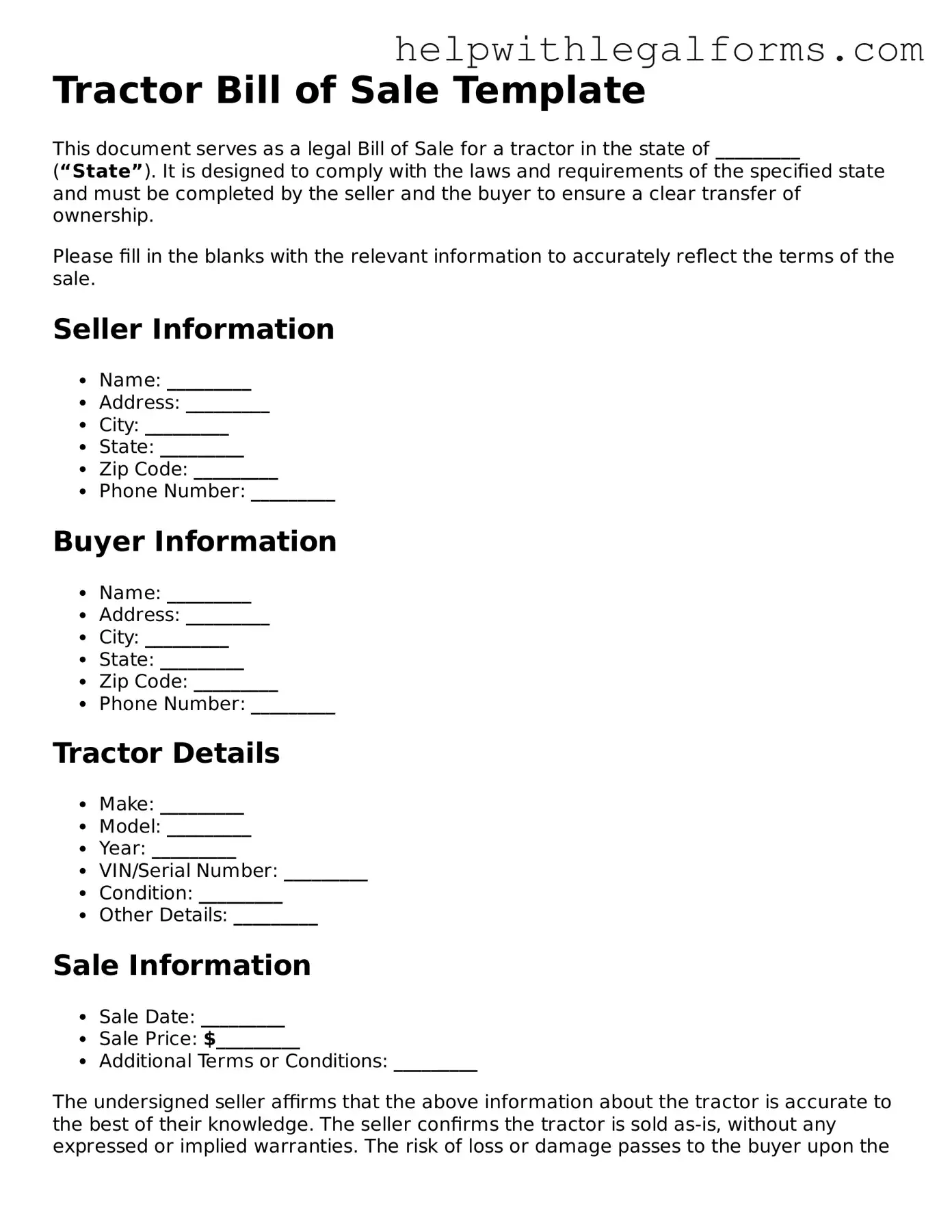What is a Tractor Bill of Sale form?
A Tractor Bill of Sale form is a document that records the details of a transaction between a seller and a buyer for the sale of a tractor. It serves as a proof of purchase and includes information such as the date of sale, purchase price, and details about the tractor and the parties involved.
Why do I need a Tractor Bill of Sale?
This document is crucial for several reasons. It legally records the transfer of ownership, helps in the registration process of the tractor if required, and serves as evidence in disputes. It also provides a clear record for tax purposes and protects both the buyer and seller by detailing the condition and terms of sale.
What information should be included in a Tractor Bill of Sale?
It should contain the names and addresses of both the buyer and seller, a description of the tractor (including make, model, year, and serial number), the sale price, the date of the sale, and any warranties or disclosures. Signatures of both parties should also be included.
Is a notary required for a Tractor Bill of Sale?
While not always mandated, having the document notarized can add a level of legal protection and authenticity to the transaction. The requirements can vary by state, so it's a good idea to check local laws.
Can I create a Tractor Bill of Sale myself?
Yes, you can draft a Tractor Bill of Sale yourself. It is important, however, to ensure that all necessary information is included and that the document is clear and legible. Using a template can be helpful to ensure all pertinent items are covered.
Does the Tractor Bill of Sale need to be filed with any government agency?
This depends on state laws and the specifics of the transaction. While generally, the document does not need to be filed with a government agency, it may be necessary for registration or tax purposes. Check with your local DMV or tax authority for specific requirements.
Can a Tractor Bill of Sale be used for used tractors only?
No, a Tractor Bill of Sale can be utilized for both new and used tractors. The important aspect is that it accurately reflects the transaction details, regardless of the tractor's condition.
What happens if I lose my Tractor Bill of Sale?
If the Bill of Sale is lost, it's important to contact the other party involved in the transaction and attempt to get a duplicate signed. If this isn’t possible, legal advice may be needed to determine the next steps, such as drafting a new document and getting it signed again.
Are there any specific conditions that should be disclosed in the Tractor Bill of Sale?
Yes, any information that significantly affects the tractor's value or operation should be disclosed. This includes details about any damages, repairs, or modifications. Full disclosure can help prevent disputes and legal issues down the line.
